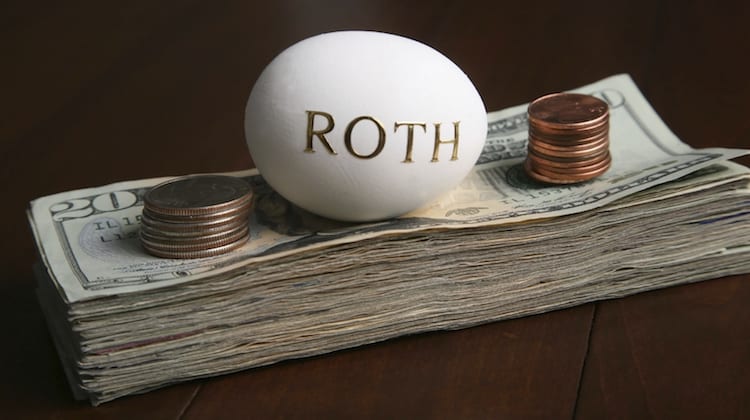Withdrawals from Roth IRAs Q&A

My previous article listed the rules that every Roth IRA (RIRA) owner must know and understand about elective withdrawals from RIRAs.
The after-tax nature of Roth IRA contributions does not make these withdrawals any less intricate than withdrawals from Traditional IRAs. Actually, many of the same rules and conditions apply to both types of accounts.
Here are three real life examples that should explain how the rules for RIRA withdrawals affect some real-life situations.
Q. I had no taxed income my first year of retirement. I decided to do a large Roth conversion ($86,000), on which I paid 15% federal tax after my tax deductions for the year. This is the first Roth IRA I have ever had. I am 64 this year, and if I did this conversion in February of this year (2016), how long do I have to wait until all my withdrawals from the RIRA I created are tax free? Do I have to contribute employment wages to this account for it to be a real RIRA or can I create a RIRA only with a conversion from my TIRA?
A. The IRS rules require that to begin the five-year clock for a Roth IRA. The IRA must be opened with an approved IRA custodian and it must be “funded.” That means that at least $1 must be added to the IRA for that year. However, most IRA custodians will require a greater minimum annual contribution than $1. The contribution may be a direct contribution of earned income – or alimony – it may be a conversion from a TIRA or a direct conversion from an employer retirement plan.
The five-year holding period will begin Jan. 1 of the year you make the first contribution and will go through Dec. 31 of the fifth year. While the holding period begins on Jan. 1 of the year you make the first contribution, this contribution can be as late as April 15 of the following year for direct contributions. However, conversion contributions must be made by Dec. 31 of the contribution year. So, if your conversion was in 2016, because you are already older than 59.5, the earliest date for a non-taxable, qualified withdrawal of any amount from your RIRA will be January 1, 2021, to meet the full five-year period.
Q. I am 49 and this year I had to take a withdrawal from my Roth IRA for a family emergency. I was told that I must complete and file a form 8606 with my tax return this year for the RIRA withdrawal. However, I had to stop at line 22 of the form 8606, which asks me for my RIRA basis. I have no idea how much I have contributed since 1998 when I made my first RIRA contribution. While I believe that I have contributed every year after 2002, I am not certain. What should I do to get this number? Also, will I have to pay tax on any part of the withdrawal I made?
A. The only document that shows each year’s contributions will be the form 5498 for each year. However, most IRA custodians will keep a record of your RIRA contributions over the years. Check with your custodian. Alternatively, you could look back through your tax files to see if you kept your past form 5498s, although this could take quite a bit of time. As long as the amount you have withdrawn is equal to or less than your RIRA basis – the total of all past contributions – there will be no tax and no penalty for this withdrawal. If your withdrawal exceeds the RIRA basis, then the part of your withdrawal that exceeds this amount must be included as income and may be subject to the 10% penalty, depending on the reason for the family emergency. You can find a complete list of exception to the 10% early withdrawal penalty listed in a previous article – point 4.
Q. I am over 59.5 and I have held a RIRA since 2001 and I have contributed to that account every year that I worked through 2011. My grandson needs to buy a car to get to school and back. May I loan him the $12,000 he needs to buy a car from my RIRA if I pay it back over a fixed period and the payments to the IRA are regular each month?
A. No, you may not. An IRA may not make loans that are paid back with interest, which the IRS would consider a prohibited transaction. An IRA only allows for elective withdrawals that may be returned without interest, penalty or taxation if the return occurs within 60 days of the withdrawal and only once for all IRAs in a 12-month period per IRA owner.
However, you could make a tax-free withdrawal of $12,000 from your RIRA, assuming you have made at least that amount of contributions over the years. Then, you could personally loan that to your grandson. However, this arrangement would have nothing to do with the RIRA and you could not replace the withdrawn dollars after 60 days, assuming this was the only withdrawal you have made from any of your IRAs within a 12-month period.
Now that you have a better understanding of RIRA and TIRA elective withdrawals, I will discuss briefly Direct and Indirect Rollovers in my next article. After that, I will conclude the section about IRA transactions with a few articles about the most complex type of IRA withdrawals – Mandatory IRA withdrawals.

Bruce Miller is a certified financial planner (CFP) who also is the author of Retirement Investing for INCOME ONLY: How to invest for reliable income in Retirement ONLY from Dividends and IRA Quick Reference Guide.




